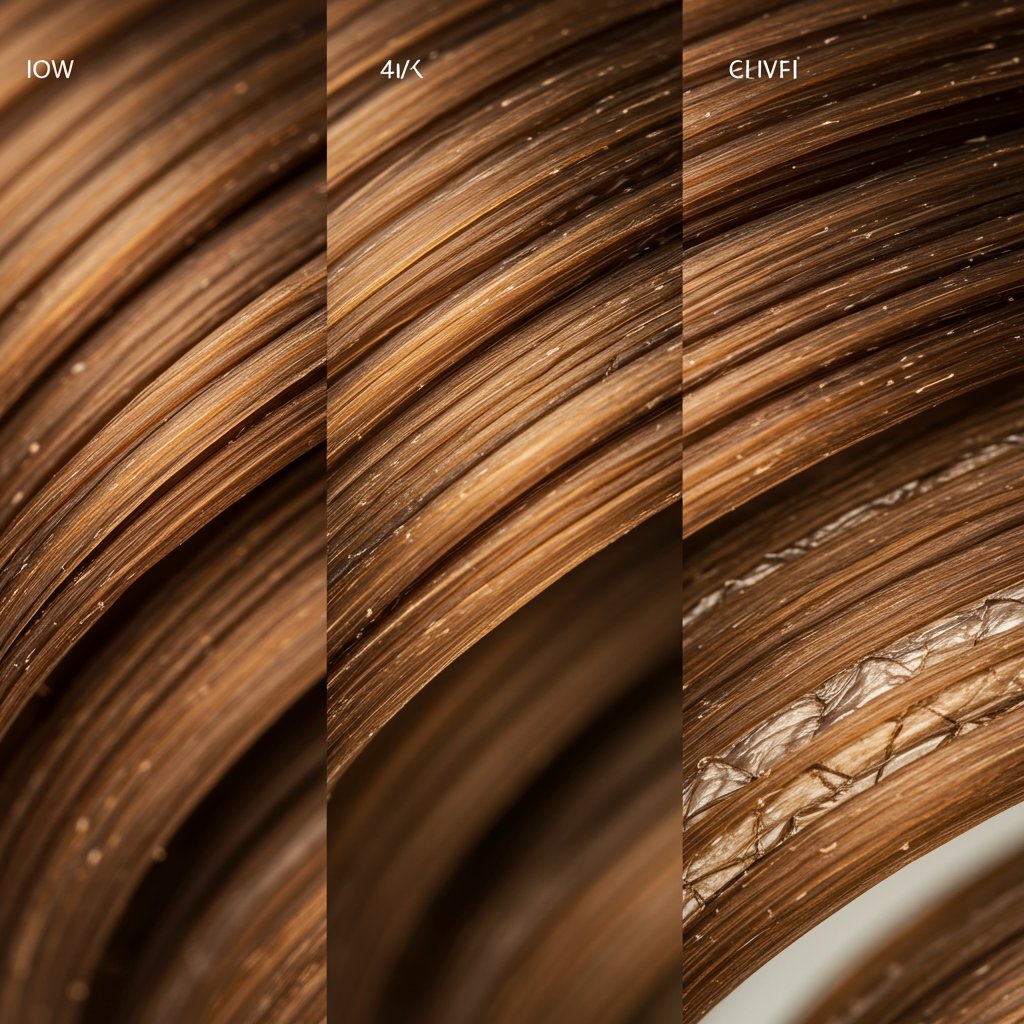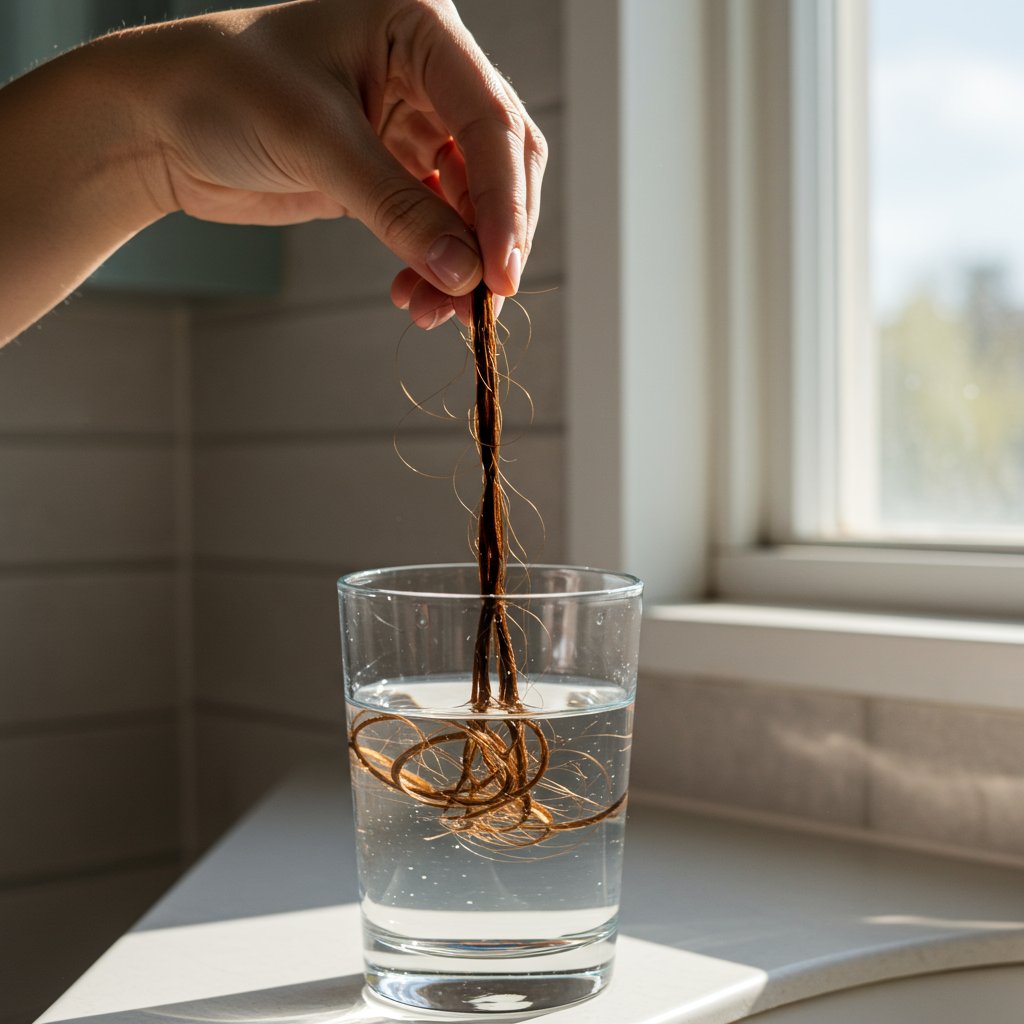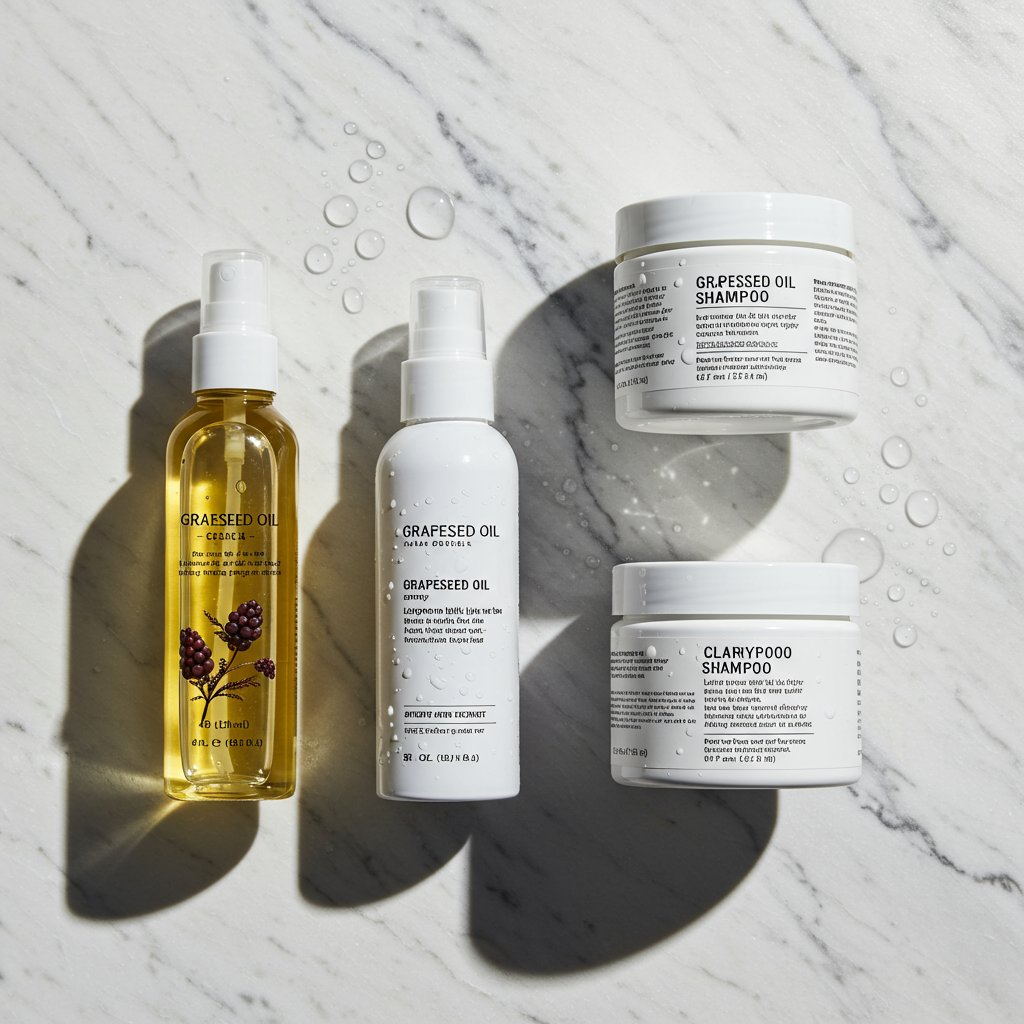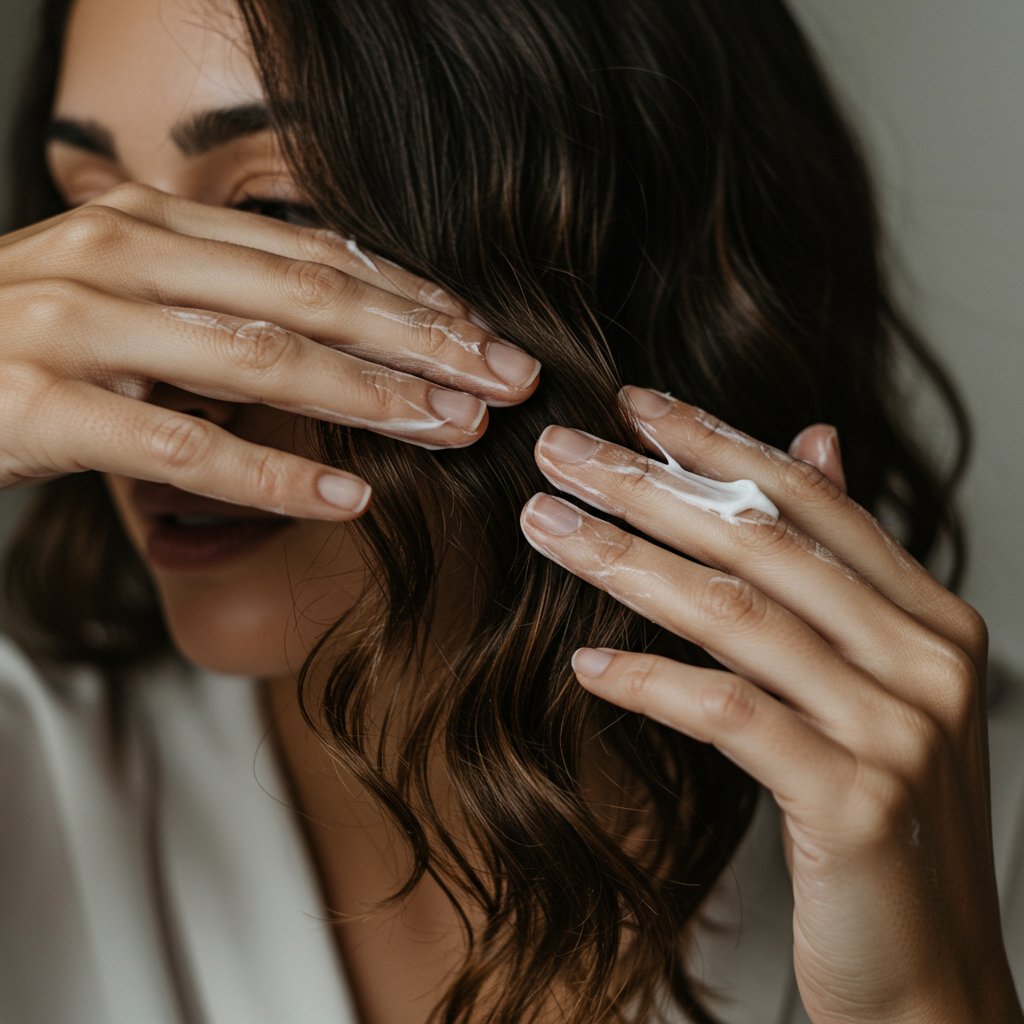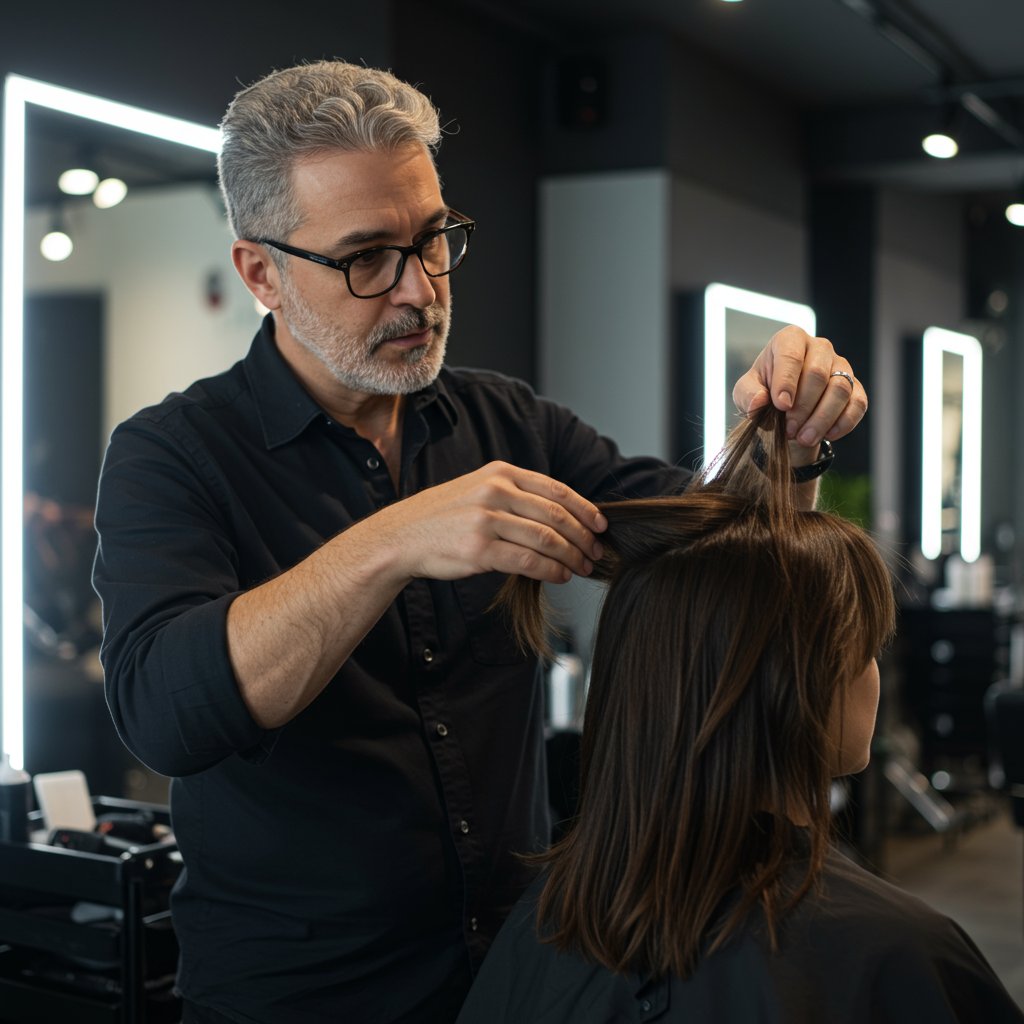Your Hair Has a Secret: Unlocking the Power of Hair Porosity
Have you ever followed a hair tutorial to the letter, using the exact same products as the influencer, only to end up with greasy, limp, or frizzy results? The frustration is real, and the culprit is often a misunderstood yet fundamental aspect of your hair: its porosity. Understanding your hair porosity isn't just another trend; it's the foundational key to unlocking a truly effective and personalized hair care routine. It explains why your friend's holy-grail coconut oil weighs your hair down, or why your hair seems perpetually dry no matter how much conditioner you use. Essentially, hair porosity dictates how well your hair can absorb and retain moisture, which directly impacts its health, appearance, and response to products.

This comprehensive guide will demystify the science behind hair porosity, transforming the way you think about and care for your hair. We'll explore what it is, how to accurately determine your hair's specific type, and most importantly, how to build a targeted regimen with the right products and techniques. Moving beyond the one-size-fits-all approach to hair care allows for smarter product choices, less waste, and ultimately, the healthy, vibrant hair you've always wanted. Get ready to decode your hair's unique language and finally give it the precise care it has been craving.
What Exactly is Hair Porosity? A Look Beneath the Surface
To understand hair porosity, we need to visualize the structure of a single hair strand. Each strand is composed of three layers: the medulla (the innermost core), the cortex (the middle layer containing keratin and melanin), and the cuticle (the outermost protective layer). The cuticle is the key player in hair porosity. It's made up of tiny, overlapping scales, much like the shingles on a roof. When these scales are tightly packed and lie flat, they create a smooth, protective barrier. When they are raised, chipped, or have gaps, the inner cortex is more exposed. Hair porosity is simply a measure of how open or closed these cuticle scales are.
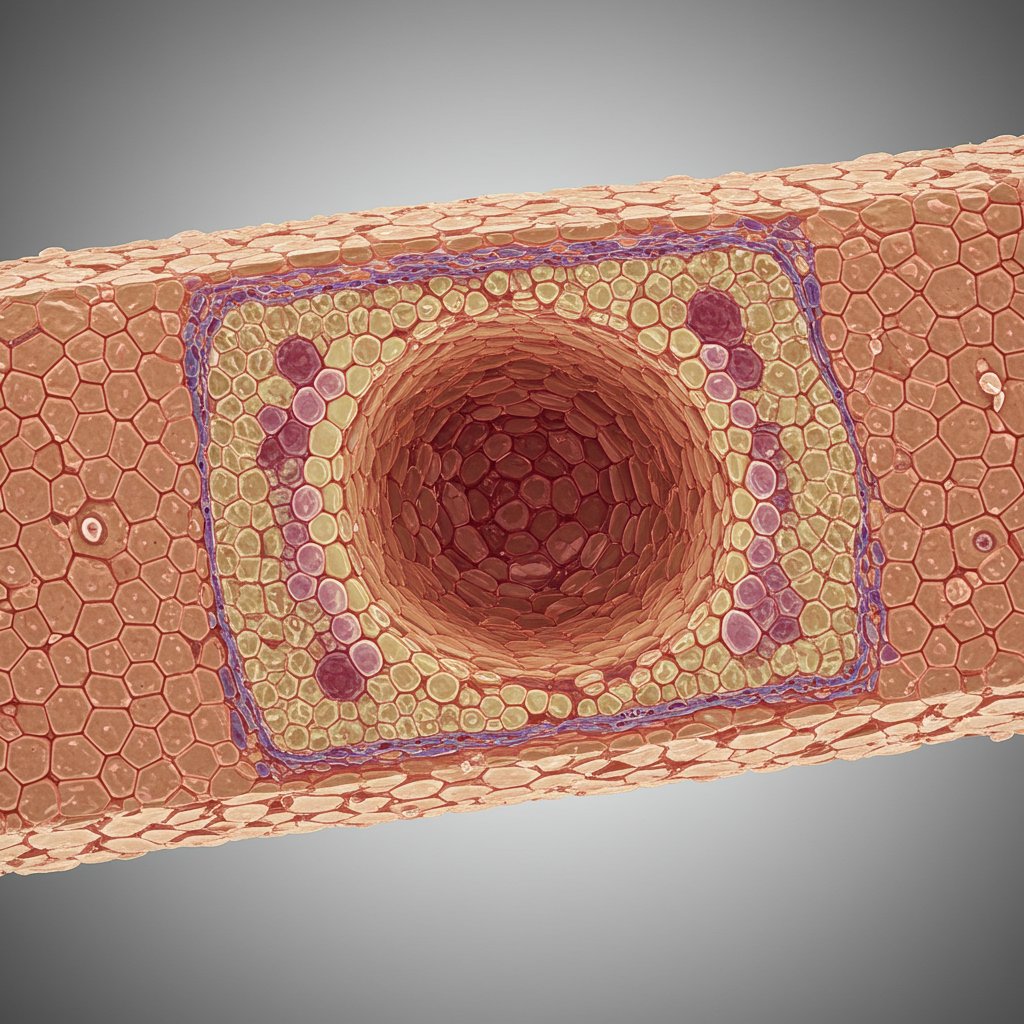
A tightly bound cuticle layer means there are fewer gaps or holes for water and products to enter the hair shaft. This is known as low porosity. Conversely, a cuticle layer that is raised and has significant gaps allows moisture to pass in and out freely. This is high porosity. This structural difference is the primary reason why two people with the same hair type (e.g., curly, fine, thick) can have completely different experiences with the same products. Porosity is not about hair texture or density, but about the condition of the hair's surface, which can be influenced by both genetics and external factors.
Think of it like this: low porosity hair is like a raincoat, repelling water and making it difficult for moisture to penetrate. High porosity hair is like a sponge, soaking up water quickly but also losing it just as fast. Medium porosity falls somewhere in between, acting like a well-balanced cotton t-shirt that absorbs moisture effectively and retains it for a reasonable amount of time. Recognizing which category your hair falls into is the first and most critical step toward building a routine that works with your hair's natural structure, not against it.
The Three Types of Hair Porosity: A Detailed Breakdown
Understanding the distinct characteristics of each porosity level is crucial for identifying your own and tailoring your care routine accordingly. While it's a spectrum, hair is generally categorized into three main types: low, medium, and high porosity.
Low Porosity Hair: The Resistant Fortress
Low porosity hair has a tightly packed, flat-lying cuticle layer. This structure makes it highly resistant to absorbing moisture.
- Characteristics: Water and products tend to bead up on the surface of the hair rather than sinking in. Hair takes a very long time to get fully saturated in the shower and, conversely, takes a long time to air dry. It's prone to product build-up because products sit on top of the hair instead of being absorbed. When healthy, it's often shiny and strong because the cuticle is intact.
Challenges: Getting moisture into* the hair shaft is the primary battle. Heavy oils, creams, and butters can easily weigh it down, leading to a greasy, limp appearance. It can be difficult to color or chemically process.
Medium Porosity Hair: The Balanced Ideal
Often considered the 'normal' or ideal porosity level, medium porosity hair has a looser cuticle layer that allows moisture to penetrate the hair shaft easily while also retaining it effectively.
- Characteristics: This hair type holds styles well, absorbs and retains moisture with ease, and looks healthy and vibrant with minimal effort. It can be colored and chemically treated with predictable results and is less prone to extreme dryness or build-up. It doesn't take an excessively long time to wet or dry.
- Challenges: While it's the easiest to manage, it's not invincible. Over-processing, excessive heat styling, or neglect can damage the cuticle, pushing it towards a higher porosity level over time. The key is maintenance and protection.
High Porosity Hair: The Thirsty Sponge
High porosity hair has gaps, holes, and raised scales along the cuticle layer. This can be a genetic trait or the result of damage from chemical processing, heat styling, or environmental factors.
- Characteristics: This hair absorbs water and products almost instantly, like a sponge. However, because the cuticle is so open, it loses that moisture just as quickly. It often looks and feels dry, is prone to frizz and tangles, and can break easily. It also air-dries very quickly.
Challenges: The main goal is to get moisture in and then seal it* to prevent it from escaping. This hair type can feel perpetually dry and requires a routine focused on deep conditioning, sealing, and protein treatments to help patch the holes in the cuticle.
How to Test Your Hair Porosity at Home: Simple & Effective Methods
Before you can build the right routine, you need to be certain about your hair's porosity. While a professional stylist can often tell by feel and observation, there are several simple tests you can perform at home. For the most accurate results, make sure your hair is clean, dry, and free of any product.
The Float Test (The Strand Test)
This is the most well-known method.
- Preparation: After washing and rinsing your hair thoroughly to remove all product build-up, take a single strand of hair that has naturally shed (from your brush or comb).
- The Test: Drop the clean strand into a glass of room-temperature water.
- Observation: Watch what it does over the next 2-4 minutes.
*
Sinks to the bottom quickly: Your hair is likely high porosity. It absorbed water fast, became heavy, and sank.
*
Floats at the top: Your hair is likely low porosity. The tight cuticle repelled the water, keeping it afloat.
*
Floats in the middle or sinks slowly: Your hair is likely medium porosity, absorbing water at a moderate pace.
The Spray Bottle Test
This test provides a more immediate visual cue.
- Preparation: Take a small section of your clean, dry hair.
- The Test: Lightly mist the section with water from a spray bottle.
*
Beads up: If you see small water beads sitting on the surface of your hair, you have low porosity hair.
*
Absorbs quickly: If the water disappears into your hair almost instantly, you have high porosity hair.
*
Sits for a moment, then absorbs: If the water sits on the surface for a minute or two before sinking in, you likely have medium porosity hair.
The Slip 'n' Slide Test
This tactile test helps you feel the condition of your cuticle.
- The Test: Pinch a single strand of hair between your thumb and index finger.
- Movement: Slide your fingers up the strand, from the tip towards your scalp.
*
Smooth: If the strand feels completely smooth, your cuticles are flat and tightly bound, indicating low porosity.
*
Bumpy or rough: If you can feel slight bumps or ridges along the way, your cuticles are raised, indicating high porosity.
*
Slightly uneven but not rough: This suggests medium porosity.
The Ultimate Care Guide for Low Porosity Hair
Caring for low porosity hair is all about strategic hydration and avoiding build-up. The goal is to help the tightly-bound cuticle lift just enough to allow moisture in, then keep it there without weighing the hair down.
Product Selection is Key
Heavy, thick products are the enemy of low porosity hair. They will sit on the surface, creating a greasy, sticky mess. Instead, focus on lightweight, water-based products. Look for ingredients like glycerin, honey, aloe vera, and panthenol, which are humectants that attract moisture. Lightweight liquid leave-in conditioners, milks, and serums are your best friends. For oils, choose options that can penetrate the hair shaft more easily, such as argan oil, grapeseed oil, and sweet almond oil. Avoid heavy butters like shea and cocoa butter in large quantities, as they will likely just coat the hair.
Techniques for Better Absorption
Since the cuticle is resistant, you need to gently encourage it to open. Heat is the most effective tool for this. When deep conditioning, use a steamer, a thermal heat cap, or simply cover your hair with a plastic cap and wrap it in a warm towel for 20-30 minutes. The warmth will lift the cuticle scales, allowing the conditioner to penetrate deeply. Applying products to damp, warm hair (right out of the shower) also enhances absorption. Finally, clarifying regularly is essential. Use a gentle clarifying shampoo once or twice a month to remove any product residue that has accumulated on the hair's surface, which can further block moisture.
Mastering the Routine for High Porosity Hair
With high porosity hair, the challenge isn't getting moisture in—it's keeping it there. The raised, open cuticle allows moisture to escape almost as quickly as it enters, leading to chronic dryness and frizz. The routine must focus on filling the gaps in the cuticle and sealing it shut.
Layering and Sealing for Success
Layering products is a game-changer for high porosity hair. Methods like the LOC (Liquid, Oil, Cream) or LCO (Liquid, Cream, Oil) are ideal. Start by applying a water-based liquid leave-in conditioner to hydrate the hair. Follow up with a cream to provide more moisture and definition. Finally, apply a heavy oil or butter (like shea butter, castor oil, or olive oil) to seal everything in. This final layer acts as a barrier, trapping the moisture inside the hair shaft. Regular deep conditioning is non-negotiable. Look for masks rich in emollients and butters. Protein treatments are also vital. The proteins help to temporarily patch the holes in the damaged cuticle, strengthening the hair and improving moisture retention. Be careful not to overdo it; once or twice a month is often sufficient.
Gentle Handling and Environmental Protection
High porosity hair is fragile and prone to breakage. Minimize heat styling and always use a heat protectant. Avoid harsh sulfates in shampoos, which can strip the hair of its natural oils and lift the cuticle even further. Instead, opt for co-washing or sulfate-free cleansing conditioners. Rinsing your hair with cool or lukewarm water after conditioning can help to close the cuticle scales. Be mindful of friction from towels and pillowcases; use a microfiber towel or an old t-shirt to dry your hair, and sleep on a silk or satin pillowcase to reduce breakage and frizz.
Balancing Your Care for Medium (Normal) Porosity Hair
If you have medium porosity hair, congratulations—you have the best of both worlds. Your hair readily accepts and retains moisture, making it relatively low-maintenance. However, this doesn't mean you can neglect it. The primary goal for medium porosity hair is maintenance and prevention to keep it in its healthy state.
The Maintenance Mindset
Your hair is balanced, so your routine should be too. You don't need heavy creams or weekly clarifying treatments. A good quality, moisturizing shampoo and conditioner will suffice for regular washing. While deep conditioning isn't required as frequently as with high porosity hair, a treatment every 2-4 weeks will help maintain elasticity and shine. Pay attention to your hair's needs. If it starts to feel a little dry, incorporate a deep conditioner. If it feels slightly weighed down, use a clarifying shampoo on your next wash day. The key is to respond to subtle changes before they become major issues.
The Dangers of Damage
Medium porosity hair is not immune to damage. Excessive heat styling, bleaching, coloring, and sun exposure can all damage the cuticle, shifting your hair's porosity toward the higher end of the spectrum. Always use a heat protectant spray before using hot tools. If you spend a lot of time in the sun or swimming pools, use products with UV filters and rinse your hair thoroughly after swimming to remove chlorine or salt. Light protein treatments can be beneficial occasionally to reinforce the hair's structure, but avoid overloading it. Your focus should be on preserving the healthy state of your hair's cuticle through gentle handling and protection from potential aggressors.
Pro-Stylist Tips for Managing Any Porosity Level
Beyond specific routines, certain universal principles can help manage hair at any porosity level. Experienced stylists often recommend these habits for maintaining optimal hair health.
- Clarify Strategically: No matter your porosity, product build-up and hard water minerals can coat the hair, preventing even the best products from working. Use a clarifying shampoo as needed—monthly for low porosity, and perhaps every 6-8 weeks for medium and high porosity.
- pH Matters: The pH of your products can influence your hair cuticle. Slightly acidic products (pH 4.5-5.5) help to smooth and close the cuticle, which is especially beneficial for high porosity hair. An apple cider vinegar rinse (diluted) after conditioning can help seal the cuticle and add shine.
- Listen to Your Hair: Your hair's needs can change with the seasons, your environment, and your styling habits. What works in the humid summer might not be enough in the dry winter. Be prepared to adjust your products and techniques accordingly.
- Focus on Application: How you apply products is as important as what you apply. For low porosity hair, emulsify products with a little water in your hands to thin them out for better spreadability. For high porosity hair, use the 'praying hands' method to smooth products down the hair shaft, encouraging the cuticle to lie flat.
- Seek Professional Treatments: Sometimes, at-home care isn't enough. Professional salons offer specialized treatments like protein masks, moisture infusions, and glosses that can provide a much-needed reset for your hair, particularly if it's been damaged.
Frequently Asked Questions About Hair Porosity
1. Can my hair have different porosity levels in different areas?
Absolutely. This is very common. The hair at your roots is newer and generally healthier (lower porosity), while your ends are older and have sustained more damage (higher porosity). You may need to apply heavier products to your ends and lighter ones near your roots.
2. Is hair porosity genetic?
Yes, your baseline porosity is determined by your genetics. However, it can be altered by external factors. Someone born with low porosity hair can develop high porosity hair through repeated bleaching and heat damage.
3. Does hair porosity relate to hair type (e.g., curly, straight)?
Not directly. You can have fine, straight, low porosity hair or coarse, curly, low porosity hair. The same is true for all porosity levels. However, curly and coily hair types are often more prone to having higher porosity due to the structure of the hair shaft, which can have natural bends and twists where the cuticle is slightly lifted.
4. How often should I test my hair porosity?
You don't need to test it frequently. Test it once to establish your baseline. You may want to re-test it if you notice significant changes in how your hair behaves or after a major chemical process like bleaching your entire head.
5. Can I change my hair porosity permanently?
You cannot permanently change your genetic porosity. However, you can manage and improve it. For high porosity hair, you can use protein treatments to temporarily 'patch' the cuticle. For low porosity hair, you can use techniques like steam to help it absorb moisture. The only way to get back to your natural porosity after damage is to grow it out and cut off the damaged sections.
6. Do I need to throw out all my old products?
Not necessarily. You may be able to adapt them. For example, if you have a thick conditioner and low porosity hair, try diluting it with a little water before application. If you have a light oil and high porosity hair, use it as the 'O' in your LOC method but plan to layer a heavier cream or butter on top.
Conclusion: Your Personalized Path to Healthy Hair
Understanding your hair porosity is like being handed the instruction manual for your own hair. It elevates your care routine from a guessing game to a targeted, scientific approach. By identifying whether you have low, medium, or high porosity hair, you can finally choose the products and techniques that will deliver real, visible results. You'll waste less money on products that don't work and spend less time fighting frizz, dryness, or build-up.
Remember that decoding your hair is a journey of observation and response. Use the tests as a starting point, pay attention to how your hair feels and looks, and don't be afraid to adjust your routine as needed. Embracing your hair's unique porosity is the ultimate act of self-care, paving the way for stronger, healthier, and more manageable hair. With this knowledge, you are now empowered to build a relationship with your hair based on understanding and effective care.









